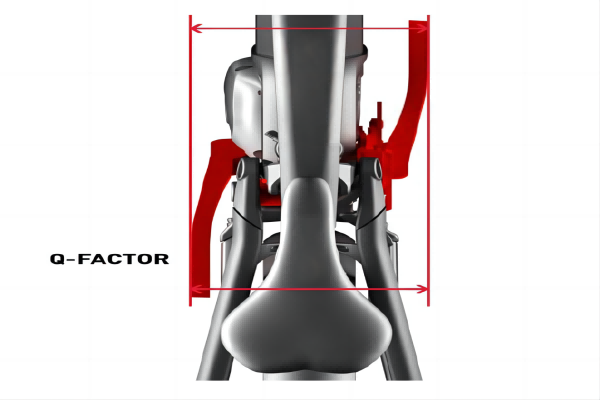Here are some questions about Q-Factor and Stance Width: What is Q-Factor? What is stance width in cycling? What kind of impact will they have on cycling? Should we always choose smaller Q-Factor and stance width in any situation?
What is Q-Factor ?
Q-Factor refers to the distance between the outside of one side of the crank and the outside of the other side of the crank. Compared to textual definitions, images may better answer this question. It is obvious that the Q-Factor data of a bicycle is fixed.
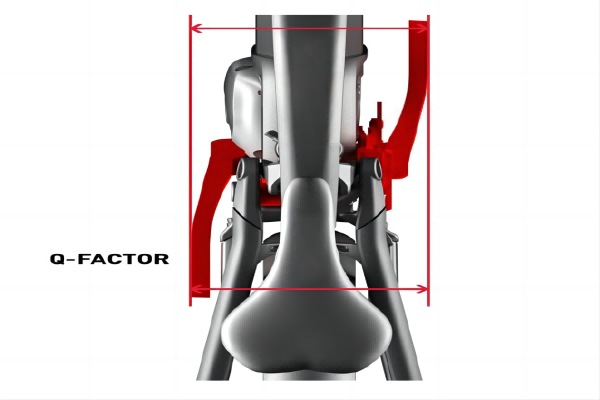
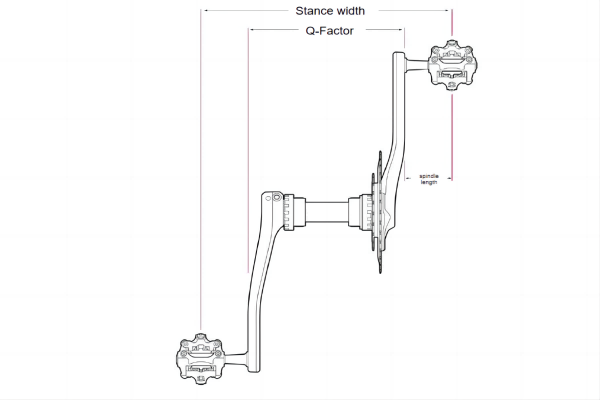
What is stance width?
Stance width refers to the lateral distance between the center points of two forefoot palms when both feet are on the pedals. More and more cyclists believe that stance width is a more comprehensive concept than Q-Factor. In the case where the Q-Factor is fixed, you can still change the stance width by selecting pedals with different axis lengths and clip positions, in order to make the bicycle’s settings more in line with your plan.
Different bicycles have different Q-Factors.
In order to accommodate wider wheels, the frames of beach bikes, snow bikes, and grass bikes have been made wider. The Bottom bracket shell width is designed to be wider as well. When you ride a snow bike, you feel like you’re riding a horse, which is quite fun.
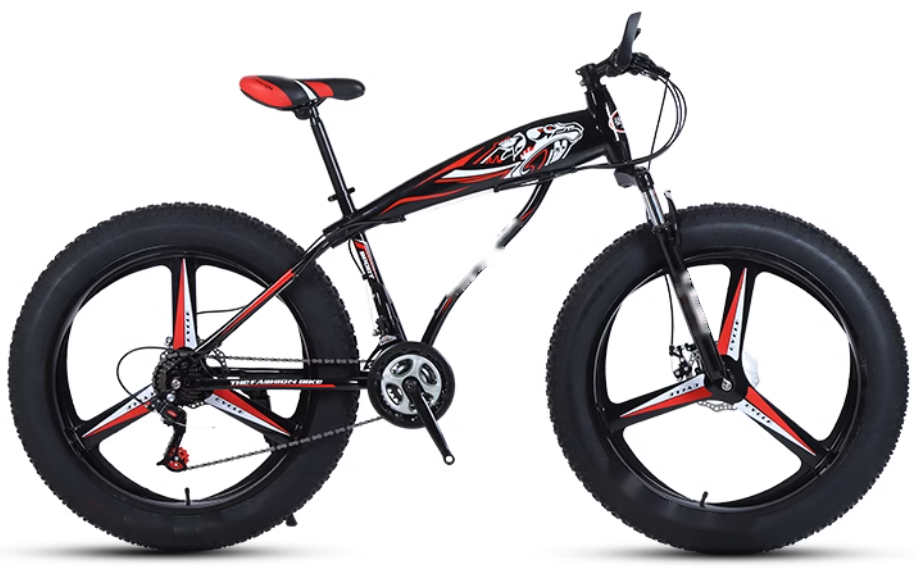
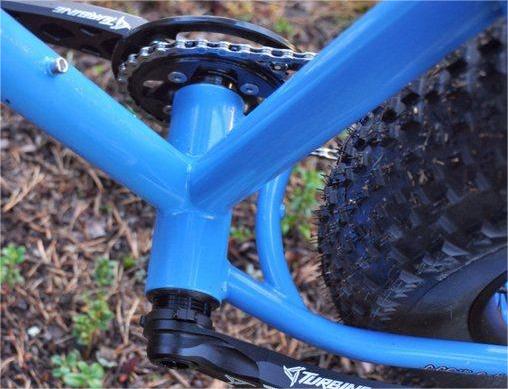
If you are a road bike rider, you can clearly feel that the stance width is wider when you suddenly try a mountain bike. Bicycles such as track bikes and road bikes that pursue speed will have smaller Q-factors. The Q-Factor of a road bike is approximately 150 mm, while that of a mountain bike is approximately 170 mm.

Is it always better to have a smaller Q-Factor / stance width?
The advantage of choosing a smaller Q-factor / stance width is that there will be a smaller projection area on the front in exchange for better aerodynamic advantages. Additionally, the knees and the force point are more perpendicular, making the stepping more efficient.

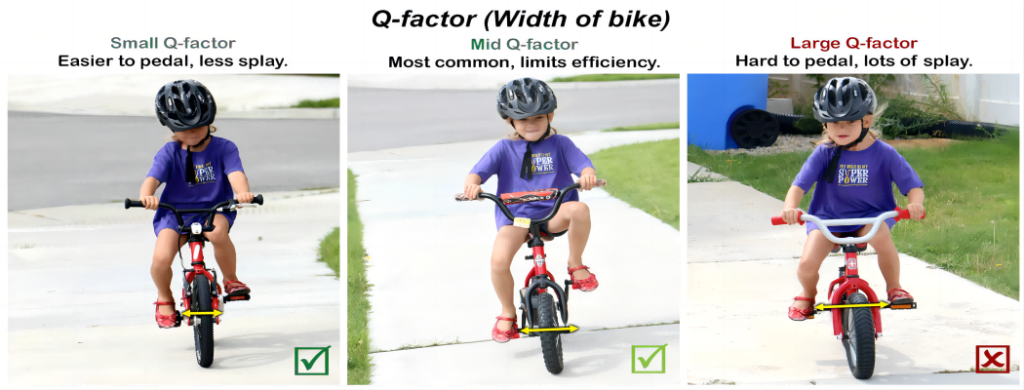
Of course not. Riders believe that a smaller Q-Factor can provide greater starting acceleration, but this is not sustainable. If your stage length is between 28-40 kilometers, using a slightly larger Q-Factor can help you achieve better results. From a biological perspective, when the Q-Factor is within a reasonable range, there will be more muscles in your body participating in this exercise. When the Q- Factor is not in this range, some muscles will lose the opportunity to participate in the exercise.
Different body structures of cyclists, different cycling distances, and different stages of the same cycle correspond to different optimal Q-Factor and stance width. Overall, we recommend choosing a number that allows your calves to remain perpendicular to the ground during cycling. But if you pursue good results in short stages, you can choose a smaller setup. Additionally, in the initial stage, if you want to achieve greater acceleration, a smaller stance width will also be helpful.
How to adjust the stance width?
(1) Just step on the farther / proximal end of the pedal, or adjust the position of the clip. Most bicycle clips have some room for lateral movement. The benefit of doing so is that there is almost no cost.
(2) Use a pedal spacer. When the clips are on the farthest or closest position from the chainring but still cannot meet your needs, the pedal spacer is a good choice.
(3) Use a pedal with a specified axis length. Compared to adding a foot spacer, directly using a pedal with a specific axis length can improve the system’s integration.
(4) Using a adjustable pedal. Engineers are providing better solutions. They designed pedals with adjustable axis length and with dynamically changing the stance width. These designs can make the rider’s trampling more efficient.
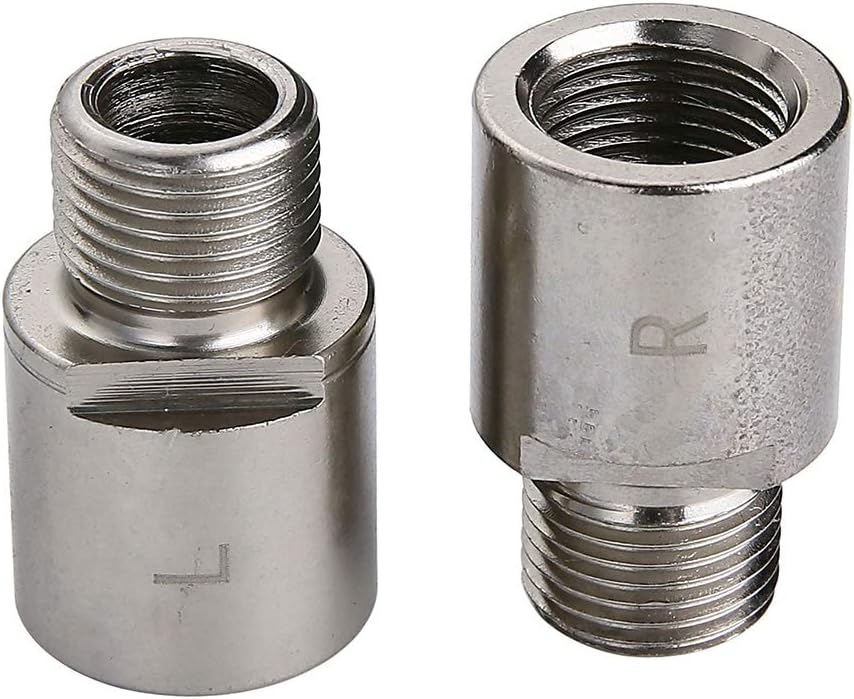
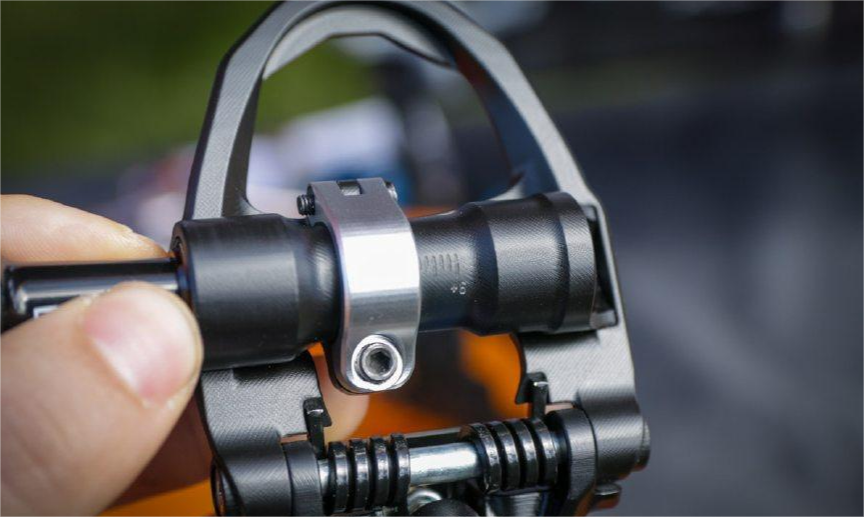
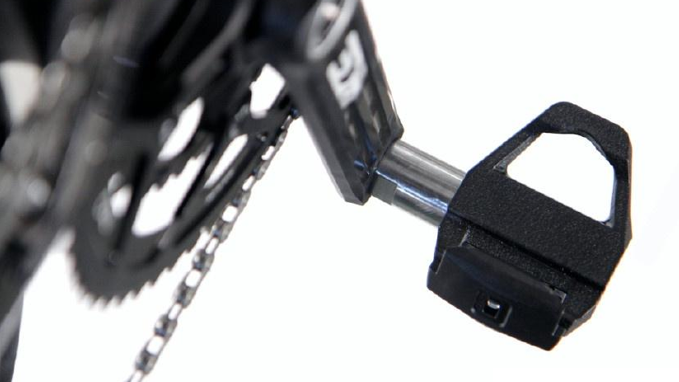
By the way, SUMLON has been manufacturing bicycle parts for over 15 years. Contact us if you are looking for a bike parts factory or a one-stop wholesaler. Peace


